Famous Patialvis - Patiala

Loading...
Born – 12, October 1891
Royal Reign- 1900 to 1938
Dynasty – Phulkian
Preceded by Rajinder Singh (Maharaja and father)
Succeeded by Yadaviner Singh (Son)
Died – March 23 1938 (age 46)
From the year 1900 to 1938 Maharaja Bhupinder Singh, GCSI, GCIE, GCVO, GBE was the Maharaja of the Princely state of Patiala and his reign was from 1900 to 1938.
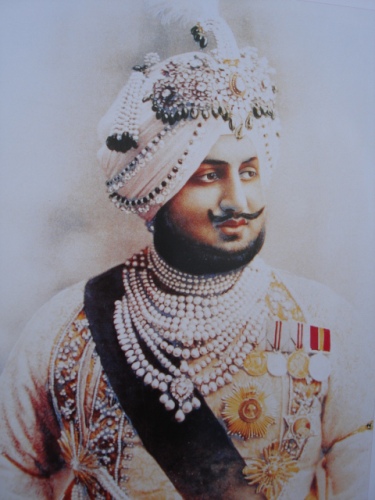
Biography
Bhupinder Singh was born at the Moti Bagh Palace, Patiala and completed his education at Aitchison College. He succeeded as Maharaja of Patiala upon death of his father, Maharaja Rajinder Singh, on 9 November 1900 at the age of 9. Shortly before his 18th birthday, a Council of Regency ruled in his name until he took partial powers on 1 October 1909, and by the Viceroy of India, the 4th Earl of Minto was invested with full powers on 3 November 1910.
During the First World War, Bhupinder Singh served as Honorary Lieutenant-Colonel, and later on, got promoted as Honorary Major-General in 1918 and Honorary Lieutenant-General in 1931 on the General Staff in France, Belgium, Italy, and Palestine. Apart from representing India at the League of Nations in 1925, he was also the Chancellor of the Indian Chamber of Princes during 1926 and 1938 (10 years). He was also a representative at the Round Table Conference. While he served as the Chancellor of Chamber of Princes from 1926 to 1931, he worked tirelessly for the betterment of his subjects and got many social reforms introduced in Patiala. He is also the Founder of The State Bank of Patiala.
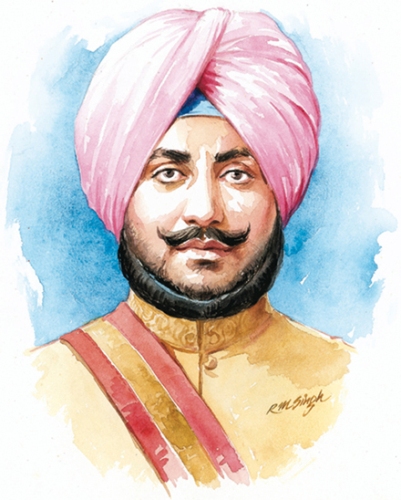
Personal Life
Bhupinder Singh was born in a Royal Sikh family to Maharaja Rajinder Singh. He married at least 10 times. Apart from his wives, he also had numerous consorts. From those unions, he had 88 children (estimated) of whom at least 53 survived him.
Wives and consorts
Her Highness Maharani Sri Bakhtawar Kaur Sahiba (1892-1960) (Daughter of Sardar Gurnam Singh, Sardar Bahadur of Sangrur, OBI) Married Bhupinder Singh in 1908.
Of the 10 wives (apart from the numerous concubines), the most notable of his wives were the four princesses from a Himalayan kingdom, who were sisters, and were said to be his favorite Queens. However, it was Bakhtawar Kaur Sahiba, however, who took part in the official ceremonies as the Maharani.
He was the proud owner of the world-famous “Patiala Necklace”, which was manufactured by the famous brand Cartier SA. To mark the first visit of Queen Mary to India his wife Maharani Bakhtawar Kaur presented her at the Delhi Darbar of 1911a magnificent necklace on behalf of the Ladies of India. His elder son, Maharaja Yadavindra Singh and younger son Raja Bhalindra Singh played first-class cricket and later served as President of the Indian Olympic Association. Yuvraj played in one Test for India, in 1934.
Hobbies
His desires can be known by the fact that he was the first man in India to own an aircraft, which he bought from the United Kingdom in the first decade of the twentieth century. He had an airstrip specially built for it at Patiala. He also got a unique monorail system built in Patiala, which was known as Patiala State Monorail Train ways.
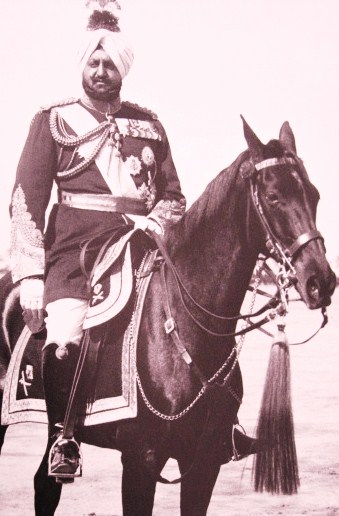
Sportsman
He was a renowned sportsman who built the world’s highest cricket pitch at Chali at a height of 2443 m in 1893, which is the highest in the world. He was also known for an exceptional collection of medals, believed to be the world’s largest at the time. According to legend, Maharaja Bhupinder Singh would be driven in a motorcade of 20 Rolls Royce cars.
He is best known for his extravagance and for being a cricketer. His cricket and polo teams — Patiala XI and Patiala Tigers — were among the best of India. He was a great patron of sports, for which he was also the most famous Maharaja of Patiala.
During 1915 and 1937, he played in 27 first-class cricket matches and was also the Captain of the Indian cricket team that visited England in 1911. He played as a member of the Marylebone Cricket Club for the season of 1926/27. In honor of Kumar Shri Ranjitsinhji, Jam Sahib of Nawanagar he donated the Ranji Trophy. He was selected as the captain of India on its first Test tour of England in 1932, but due to bad health he had to drop out two weeks before departure and the Maharaja of Porbandar took over. His elder son, Maharaja Yadavinder Singh and younger son Raja Bhalinder Singh played first-class cricket and later served as President of the Indian Olympic Association. Yuvraj played in 1934, in one Test match for India also. Most of the buildings of Chail Military School were donated by Maharaja of Patiala to the government of India.
His Royal Power
In 1930, Maharaja Bhupinder Singh felt a little low at the British Rolls Royce company’s refusal to accept an order from him for a new Rolls Royce car. Such was his power that he ordered new Rolls Royce cars, and put them to hauling garbage, dung and filth in Patiala city. To which the chagrin of the all-powerful Rolls Royce-loving Viceroy and the British ruling establishment quickly prevailed upon the Rolls Royce Company to comply with the Maharaja’s wishes by giving him a new Rolls Royce.
Later Succession of his Son
Yuvraj Yadavindra Singh became the Maharaja on 23 March 1938. He was the Maharaja, who agreed to Incorporate Patiala into the newly independent India on 5 May 1948, becoming Rajpramukh of the new Indian state of Patiala and East Punjab States Union.
His Highness’ grandson Captain Amarinder Singh is a politician in India, and served as Chief Minister of Punjab from 2002 to 2007.
Interesting Tales told by the Courtiers
To get the affection of the Maharaja, there was always a fierce rivalry, and the Maharaja used his considerable diplomatic abilities to keep them all happy and content.
One such story is of the legendry Patiala watch. At the Delhi Darbar of 1911, the old Maharaja had purchased a beautiful gold pocket watch with moon phase for Maharani Bakhtawar Kaur. As a result, there was a lot of discord amongst his wives, especially from the four Rani Sisters. In order to keep the four sisters happy, the Maharaja ordered four unique gold watches, with very ornate and beautiful gold cases in 22-carat gold and added features of a day and month calendar as well as the phases of the moon, which were grander then Maharani’s watch. The Maharaja used the services of a Swiss-based jeweler called F. Russer who was a jeweler to several members of the Royal family of Kapurthala.
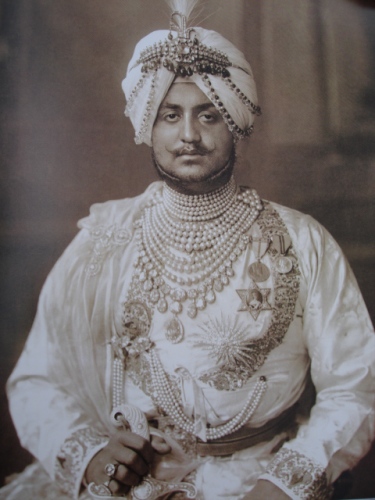
He was also known for an exceptional compilation of awards, thought to be the world’s biggest at the time. According to legend, Maharaja Bhupinder Singh would be driven in a motorcade of 20 Rolls Royce cars.
MEDALS
Knight Grand Commander of the Order of the Indian Empire (GCIE) 1911
Knight Grand Cross of the Order of the British Empire (GBE) 1918
Knight Grand Commander of the Order of the State of India (GCSI) for war honors, New Year honor 1921
Knight Grand Cross of the Order of the Royal Victorian Order (GCVO) 1922
Apart from these he also got other medals from various countries.
On March 23, 1938, the Maharaja left for his heavenly drift. As a tribute to him, the Unani College was named after him as the Bhupinder Tibbi College.
Honors :-
British
- Delhi Durbar Gold Medal in the year 1903
- Delhi Durbar Gold Medal in the year 1911
- King George V Coronation Medal in the year 1911
- Knight Grand Commander of the Order of the Indian Empire (GCIE) in the year 1911
- 1914 Star
- British War Medal in the year 1918
- Victory Medal in the year 1918
- Mentioned in Despatches in the year 1919
- Knight Grand Cross of the Order of the British Empire (GBE) in the year 1918
- Knight Grand Commander of the Order of the Star of India (GCSI) – for war services, New Year Honours in the year 1921
- Knight Grand Cross of the Royal Victorian Order (GCVO) in the year 1922
- King George V Silver Jubilee Medal in the year 1935
- King George VI Coronation Medal in the year 1937
Foreign
- Grand Cross of the Order of the Crown of Italy in the year 1918
- Grand Cordon of the Order of the Nile of Egypt in the year 1918
- Grand Cordon of the Order of Leopold of Belgium in the year 1918
- Grand Cross of the Order of the Crown of Romania in the year 1922
- Grand Cross of the Order of the Redeemer of Greece in the year 1926
- Grand Cross of the Order of Charles III of Spain in the year 1928
- Grand Cross of the Order of the White Lion of Czechoslovakia – 1930

Loading...
Rajmata Mohinder Kaur
Member of Parliament (MP)
In office – 1967-1971
Preceded by – Sardar Hukam Singh
Succeeded by – Sat Pal Kapur
Constituency – Patiala
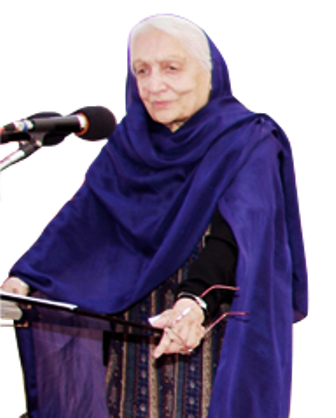
Personal details
Political party – Indian National Congress
Spouse(s) – Maharaja Yadavindra Singh
Children – Capt. Amarinder Singh
Residence – New Moti Bagh Palace, Patiala
Religion – Sikhism
Rajmata Mohinder Kaur, the present Rajmata Sahiba of Patiala, is the widow of His Late Highness Maharajadhiraj Yadavindra Singh of Patiala, who remained the maharaja of the Patiala state from 23rd of March 1938 to 1974.
Born on 14th of September 1922, her Highness Rajmata Mehtab Kaur is the daughter of S. Harchand Singh Jaijee who was a member of the Riyasat Prajya Mandal.
Her Highness played an active role in the politics of India. She served as a member of Upper House of Indian Parliament, Rajya Sabha, from the year 1964 to 1967 as a Congress (I) member. In the year 1967, she got elected to the Lower House of Parliament, Lok Sabha, on a Congress (I) ticket.
In the year 1977, Rajmata Mohinder Kaur joined the Janta Party and became its general secretary. Then she served another term in the Upper House of Indian Parliament from the year 1978 to 1984 as a Janta Party member.
She has four children: Maharaja Amarinder Singh, Maharajkumar Malvendra Singh, Maharajkumari Heminder Kaur and Maharajkumari Roopinder Kaur. Her elder son Amarinder Singh served Punjab as Chief Minister from 2002 to 2007. He is currently the President of Punjab Pradesh Congress Committee (PPCC).
Following the independence of India, she organized a number of camps in the Patiala & East Punjab States Union (PEPSU) for refuses who had came from Western Punjab and also arranged food and medical provisions for them. She along with her late husband Maharaja Yadavindra Singh worked determinedly for people of PEPSU.
Rajmata Mohinder Kaur, is still an active social worker, and currently resides in New Moti Bagh Palace, Patiala.

Loading...
Birth Name: Satwinder Kaur Khaira (known as Bitti)
Born: 29 November
Geners: Folk, Bhangra, Religious
Occupation: Singer, Musician.
Married: March 8, 2007 to Kulraj Singh Grewal, an American citizen.
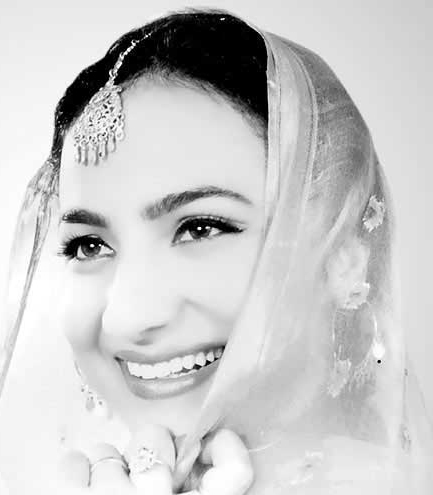
Satwinder Bitti was born on 29 November to a Punjabi Sikh family, father Gurnaib Singh and mother Gurcharan Kaur. She also has two brothers. It was her father (retired from PWD Patiala) who had keen interest in music that taught her the basic of music. At a very early age of 5, she began singing religious songs on various devotional functions. Her melodious voice and charming personality won hearts always. Being fan of lata Mangeshkar, she later took singing as her professional career, and released many folk and religious albums.
Saying goes “No one is perfect”, but Satwinder Bitti is exceptional. Apart from being a talented singer, she’s a non-medical graduate in Bsc from MCM DAV College, Chandigarh. While pursuing her graduation, she became a gold medalist in hockey, and played at the National level. She also performed at different functions organized at the college for which she also got honored.
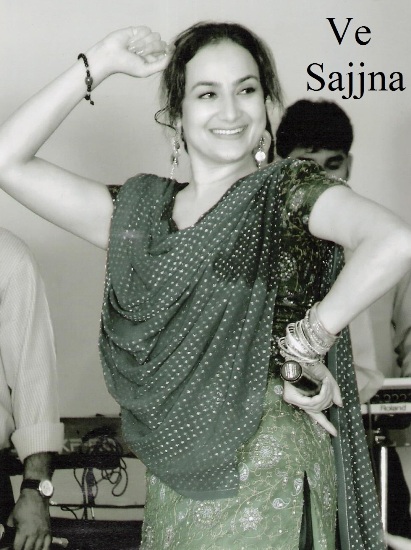
She started her career with a job in Air India Hockey Federation. It was only then that she came back to her native land Patiala and took a chance to make singing her career and succeeded. Her first album was Pure Dee Hawa.
Apart from her father, Harjit Guddu(Music director) also supported her in establishing her career.
In 2011, she was the Judge of a singing talent hunt show, ‘Awaaz Punjab Di ’, which was telecasted on Punjabi Tv channel MH1.
Satwinder Bitti has done shows all over the world including USA, UK, Canada, Australia, Newzeland, Italy, Austria, Germany, Holland, Spain, Paris, and Dubai.
She is acclaimed for her charismatic and adorable personality. She is well known for her simplicity, soberness and her dedication in any work that she does.
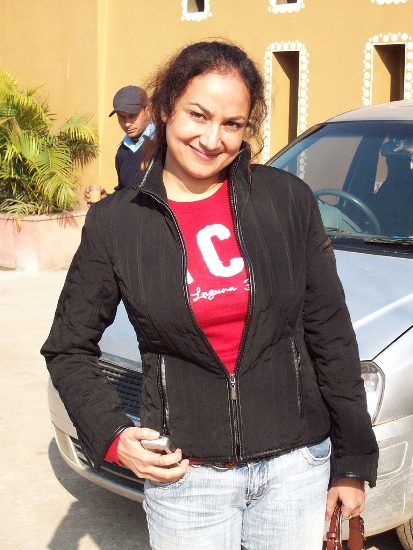
On 2011 February ,she was nearly lost as she got injured in a deadly car accident, but by the prayers of her loved ones and fans from all over the world, she is back to rock the music industry.
Discography
- Pure Di Hawa
- Ik Vari Hass Ke
- Nachdi De Siron Patase
- Chandi Dian Jhanjran
- Nachna Patola Banke
- Dil De Mareez
- Giddhe Ch Gulabo Nachdi
- Mar Gayee Tere Te
- Main Ni Mangna Karauna
- Nachdi Main Nachdi
- Pardesi Dhola
- Sabar
- Khand Da Khedna
- Ve Sajjna
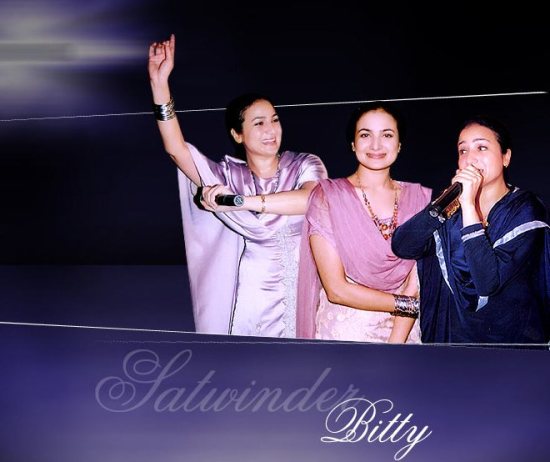
Religious
- Dhann Teri Sikhi
- Roohan Rabb Dian
- Nishan Khalse De
- Mae Ni Main Singh Sajna

Loading...
Wing Commander Rakesh Sharma, former Indian Air Force test pilot, was the first Indian to travel in space. Born January 13, 1949, Rakesh Sharma also earned name and fame in Soviet Union as well as across the world after he flew aboard the Soyuz T-11 as part of the ambitious Intercosmos program.
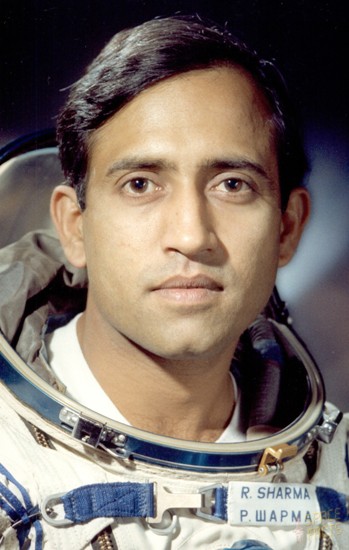
Early life –
Born in 1949 at Patiala in the state of Punjab in a Hindu Gaur family, Rakesh Sharma was adventurous by nature, and thus decided to join Indian Air Force. He joined the National Defence Academy (NDA) as an IAF cadet in 1966, and then joined the Indian Air Force in the year 1970 as a pilot officer.
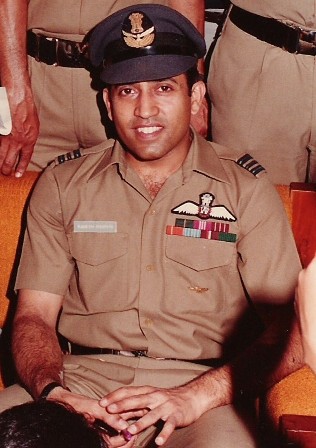
In the 1971 War, he flew several missions is MiG aircraft that helped the country achieve considerable success. He flew into space in 1984, when he was a squadron leader. He flew to space as part of a joint program between the Indian Space Research Organization (ISRO) and the Soviet Union’s Intercosmos space program. He spent more than a week (7 days, 21 hours and 40 minutes) in space on board the Salyut 7 space station.
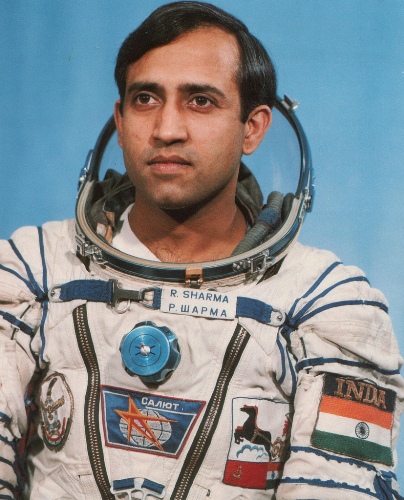
Career –
Ever since his joining the Indian Air Force, Rakesh Sharma progressed quickly through the ranks. When he embarked on the historic space mission in the year 1984 as part of a joint space program between India and Soviet Union, he was a Squadron Leader and pilot with the Indian Air Force. He was 35-year-old when he had launched along with two Soviet cosmonauts aboard Soyuz T-11 on the 3rd of April in the year 1984. Rakesh, along with the Soviet Cosmonauts, spend nearly eight days in space, on board the Salyut 7 space station, which was a low earth orbit space station. The space station was designed to conduct an earth observation program focusing on India. The mission also involved life sciences and materials processing experiments. He also experimented practicing Yoga in space to cope with the effects of long-drawn-out orbital spaceflight.
While he was in space, the then Prime Minister of India, Indira Gandhi, conversed with him and asked him how India looked from space. He replied “Saare Jahan Se Achcha Hindustan Hamara” meaning Our land of Hindustan is the Best in the world.
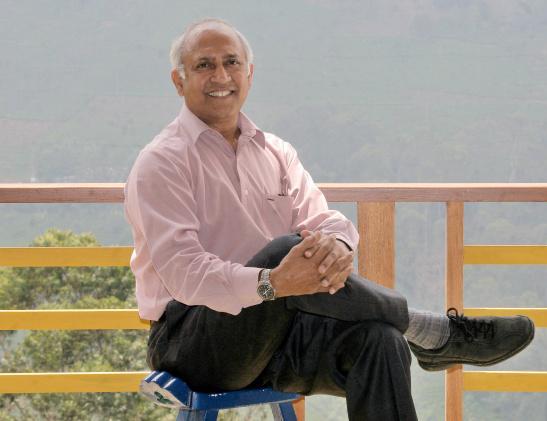
Honours –
Rakesh Sharma was bestowed with a number of honours, including Hero of Soviet Union after he returned from space. The Ashoka Chakra, India’s highest gallantry award (during peace time) was bestowed on him and the other two Soviet cosmonauts by the Government of India.
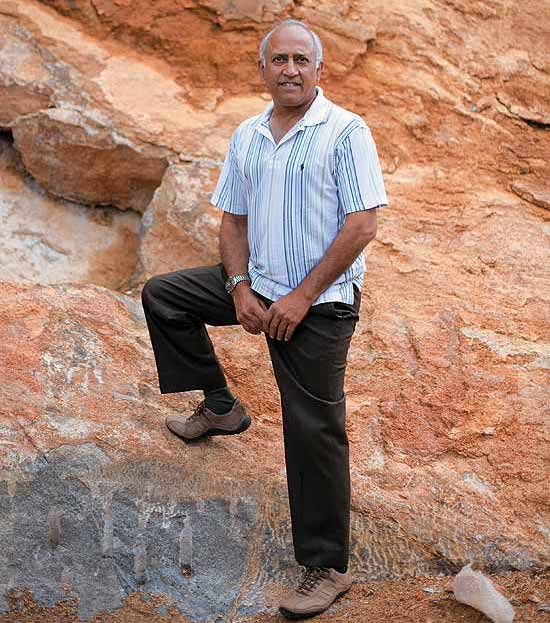
Retirement –
Rakesh Sharma retired with the rank of Wing Commander. He joined the Hindustan Aeronautics Ltd (HAL) in the year 1987 and served as Chief Test Pilot in the HAL Nashik Division until the year 1992. Then he moved on to Bangalore to work as the Chief Test Pilot of HAL. Finally, he retired from test flying in the year 2001.

Loading...
Full name – Navjot Singh Sidhu
Born – 20 October 1963 (age 49) Patiala, Punjab, India
Nickname – Sixer Sidhu, Sheri, Sherry Paaji
Batting style – Right-handed
Bowling style – Right-arm medium
Role – Batsman
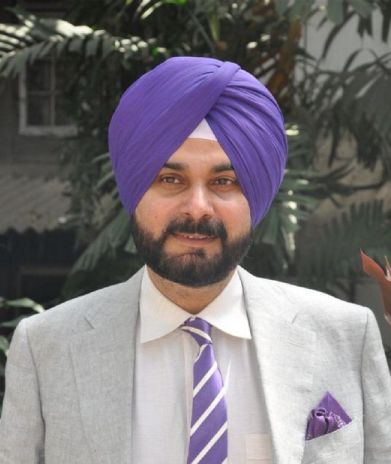
International information
National side – India
Test debut (cap 166) – 12 November 1983 v West Indies
Last Test – 6 January 1999 v New Zealand
ODI debut (cap 61) – 9 October 1987 v Australia
Last ODI – 20 September 1998 v Pakistan
Domestic team information
Years Team
1981-2000 Punjab
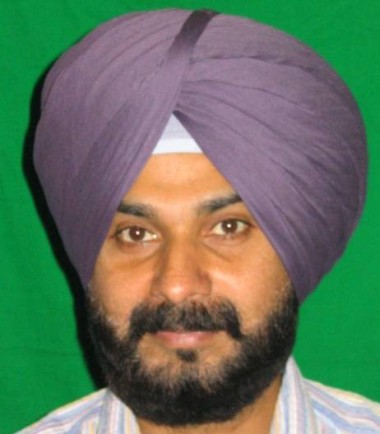
Career statistics
Competition Test ODI FC LA
Matches 51 136 157 205
Runs scored 3202 4,413 9,571 7,186
Batting average 42.13 37.08 44.31 41.77
100s/50s 9/15 6/33 27/50 10/55
Top score 201 134* 286 139
Balls bowled 6 4 104 10
Wickets 0 – – –
Bowling average – – – –
5 wickets in innings – – – –
10 wickets in match – – – –
Best bowling – – – –
Catches/stumpings 9/- 20/- 50/- 31/-
Source: espncricinfo, 1 January 2009
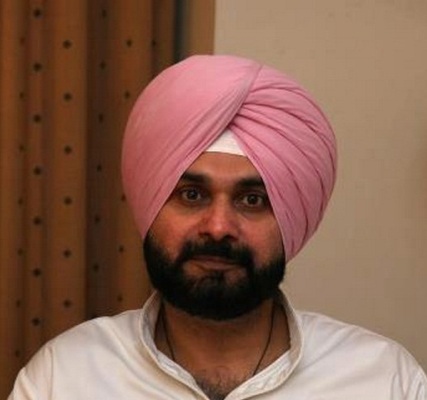
Born in Patiala, Punjab on October20, 1963, Navjot Singh Sidhu is a well-known name in Indian Cricket. He was former Indian cricketer. He was born in a Sikh Family. Her wife name is Navjot Kaur Sidhu, who is a doctor and a member of Punjab Legislative Assembly. They have two children: one son named Karan and a daughter named Rabia.
Navjot Singh Sidhu started his cricketing career in 1983 and continued until he retired on 1999. In a test match against West Indies at Ahemdabad in 1983, he made his debut, but he didn’t make much impression as he managed to score only 19 runs. He failed to impress despite of another chance which he got in the same series.
Then in 1987, he was named in the squad for Cricket World Cup 1987 (India and Pakistan). He made his One Day International debut against Australia on 9 October, 1987 where he scored 73 runs from 79 balls with 4 fours and 5 sixes, but India lost by just 1 run. He made impression by scoring 4 fifties in 5 world cup matches that he played. He failed in Semi-final match against England.
He scored his first ODI century in Sharjah against Pakistan in 1989. His highest score 134 came against England at Gwalior in 1993 which he rates as best innings played by him.
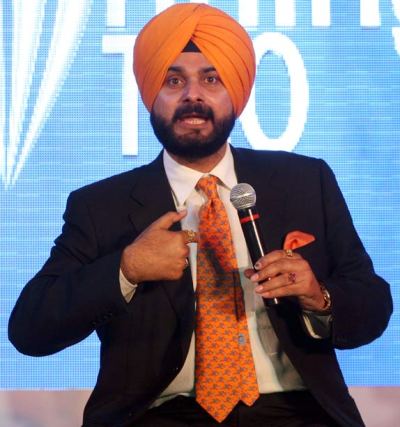
In an interview, Sidhu told how an article titled ‘Sidhu: The Strokeless Wonder’ written by Rajan Bala (writer at Indian Express) criticising him after a poor performance in 1983, changed his career. He came back and managed to get himself into 1987 World Cup where he scored 4 fifties in 5 matches he played. His performance in 1987 World Cup was applauded by same writer, Rajan Bala, who wrote another article on Sidhu’s great show at World Cup named ‘Sidhu: From Strokeless Wonder To A Palm-Grove Hitter’.
He continued with his good performance in ODI cricket and became the first Indian batsman to score 5 or more centuries in ODI cricket. He managed to score 500 or more runs in a year three times i.e. in 1993, 1994 and in 1997. In 1994, he showed good performances in ODI cricket as well and scored 884 ODI runs (highest by him in a year in ODIs).
His 201 against West Indies in 1996-97 in tests was his highest score in tests and one of the great innings played by him. He batted 11 hours and his innings of 201 was filled with 19 fours and a six. He made his name in the India cricket as an attacking batsman who had a very good tendency to attack spinners. His knock of 124 against Sri Lanka in 1993-94 was filled with 8 cracking sixes. In the 1997-98 series against Australia, he scored four fifties in five matches.
After a sparkling career, he announced his retirement from the International cricket and retired from all forms of cricket. He played 51 tests scoring 3202 runs and 9 hundreds at an average of 42.13 with 201 as his best score and 136 ODIs scoring 4413 runs and 6 hundreds at an average of 37.08 with 134 not out as his best score. His first class career is filled with 157 matches scoring 9571 runs and 27 centuries at an average of 44.31 with 286 as his highest score.
After serving Indian cricket for 18 years, he joined the commentators’ team in 2001 during India’s tour of Sri Lanka and started his career as commentator. Soon, he became famous for his ‘Sidhuisms’ (his one-liners). He started with Nimbus Sport and then moved to ESPN Start Sports and Ten Sports. Along with making appearances as a cricket commentator, he has continuously made appearances on TV shows as a ‘cricket analyst’.
He also made an appearance in a Laughter Show titled as ‘The Great Indian Laughter Challenge’ as a judge along with Shekhar Suman. ‘Funjabi Chak De’ and ‘Kareena Kareena’ are some other TV shows in which Sidhu made an appearance. Season 6 of Big Boss which aired in 2012 also featured Navjot Singh Sidhu, but due to some political reasons he was forced to make an exit from the Big Boss house.
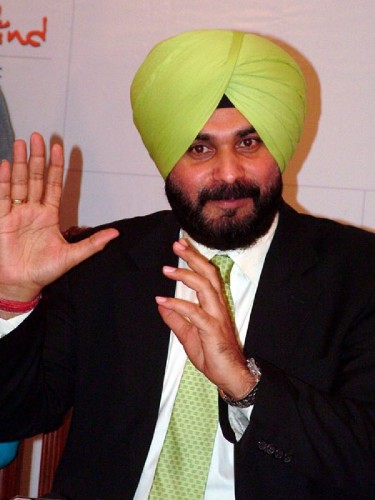
He also tried his hand in politics and got Bharatiya Janata Party ticket in Amritsar in 2004. But due to his conviction for homicide, he resigned from his position. But he stood again and won by-elections and in 2009 he went on to win the Amritsar seat.
He was accused of death of Gurnam Singh in 1988. He also got arrested and was made to spend several days in a Jail in Patiala. Jaswinder Singh (eye-witness) accused Sidhu of Gurnam Singh’s death and testified in Supreme Court of India. After all the proceedings, finally in 2006 Sidhu was sentenced to 3-year imprisonment after being found guilty. That’s why he resigned as a Member of Parliament. He made an appeal to SC in 2007 and after getting stay on his conviction order; he stood again in Elections and won the Amritsar seat.
Navjot Singh Sidhu has also made a guest appearance in a Bollywood movie ‘Mujhse Shaddi Karogi’. He also acted in Punjabi movie named ‘Mera Pind’.

Loading...
Preneet Kaur, the wife of Punjab Pradesh Congress Committee President Amarinder Singh, represents the Patiala constituency and is currently serving as Minister of State for External Affairs in the Congress-led coalition center government.
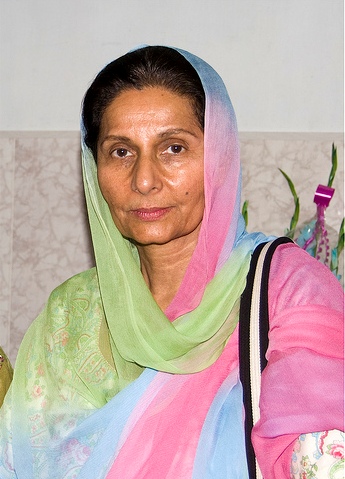
Personal life and family background –
Preneet Kaur, the titular rani of Patiala, was born on 3rd of October 1944 in Shimla, Himachal Pradesh, to mother Satinder Kaur and father Gian Singh Kahlon. She attended St. Bede’s College, Shimla and earned a graduation degree from Convent of Jesus & Mary, which is also situated in Shimla. She has one sister, Geetinder Kaur, and two children a son, Yuvraj Raninder Singh and a daughter, Jai Inder Kaur.
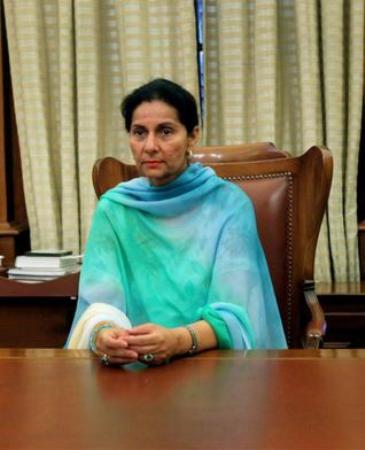
Political Career –
She was first elected to Parliament in the year 1999, from the Patiala constituency. She was re-elected in the years 2004 and 2009 from the same constituency. She had defeated Akali Dal rival candidate Prem Singh Chandumajra by more than 99,000 votes, and became the only MP (Member of Parliament) to be elected for three terms in a row.
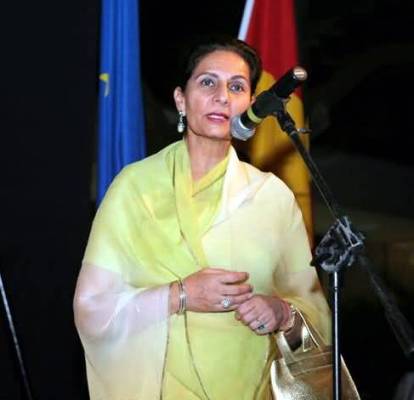
Previous to embarking on political career, Preneet Kaur volunteered with the Indian Red Cross. She created an institute called Sanjeevani to cater to special needs of disabled kids.
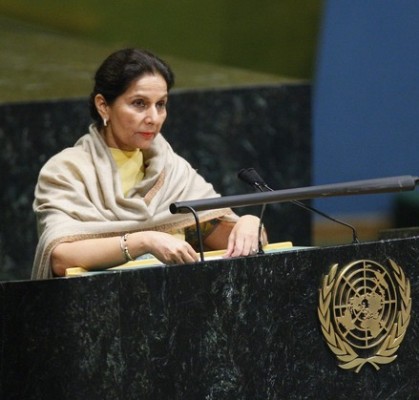

Loading...
Sir Yadvinder Singh Mahendra Bahadur, the elder son of Maharaja Bhupinder Singh, was the successor of his father as the maharaja of the princely state of Patiala. Born on 17th of January 1913 at Patiala in Punjab, and attended Aitchison College, Lahore. He remained the maharaja of the Patiala state from 23rd of March 1938 to 1974. Like his father, he had a great love for sports and games. He was a great cricketer who played for India in one Test in 1934.
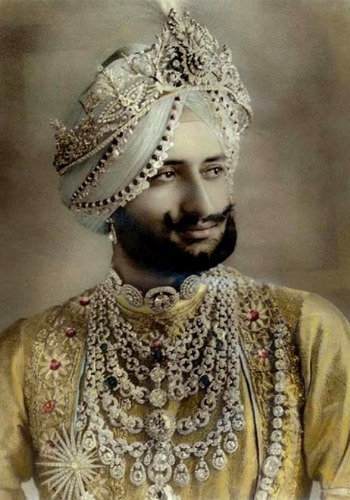
Yadvinder Singh served in the Patiala State Police and ascended to the post of Inspector General. He also served in several other countries like Italy, Malaya and Burma during the Second World War.
He also served as President of the British Indian Olympic Committee (BIOC) from 1938 to 1947 and as President of the Indian Olympic Committee from 1947 to 1960. He also played a key role in organizing the Asian Games in the country. He also served as the president of BCCI. In addition, he was a renowned horiculturist and served as Chairman of Indian Horticulture Development Council.
He founded Yadavindra Public School, a premier public school.Lal Bagh Palace, the building in which Yadavindra Public School is housed was donated by Sir Yadavindra Singh.
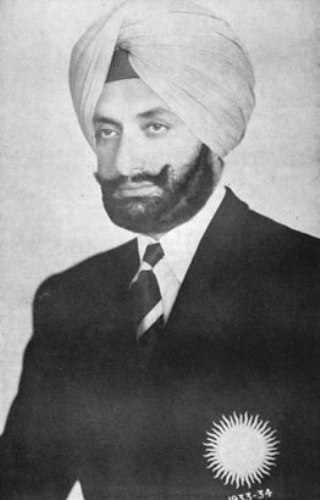
Maharaja Yadavindra Singh was married to two women – firstly to Maharani Hem Prabha Devi of Saraikela and secondly to Maharani Mohinder Kaur in 1938.
He had succeeded his father as the Maharaja of Patiala, but he agreed to the incorporation of his princely state into Independent India on 5th of May 1948. He remained Rajpramukh of the new Indian state of Patiala & East Punjab States Union until the state was fully merged with Punjab in the year 1956.
He continued to serve the country from 1956 onwards as a politician and diplomat. He served as Indian delegate to the United Nations General Assembly from 1956 to 1957 and to UNESCO in 1958. He also headed the Indian delegation to the FAO many times between 1959 and 1969. He served as Indian Ambassador to Italy between 1965 and 1966 and as Indian Ambassador to the Netherlands from 1971 to 1974. It was in the Netherlands, where he breathed his last. He died suddenly on 17th of June 1974 in his office at The Hague from heart failure, at the age of 61.
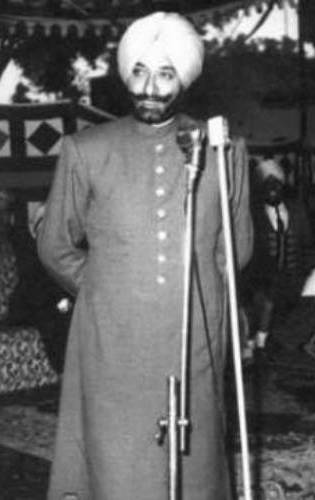
Honors
- King George V Silver Jubilee Medal in the year 1935
- King George VI Coronation Medal in the year 1937
- Knight Grand Cross of the Order of the British Empire (GBE) in the year 1942
- 1939-1945 Star in the year 1945
- Burma Star in the year 1945
- Africa Star in the year 1945
- Italy Star in the year 1945
- British War Medal in the year 1945
- India Service Medal in the year 1945
- Knight Grand Commander of the Order of the Indian Empire (GCIE) in the year 1946
- Indian Independence Medal in the year 1947
- Grand Cross of the Romanian order
- Grand Cross of the Order of Merit of the Republic of Italy in the year 1966
- Six other foreign tributes

Loading...
Captain Amarinder Singh, the former Chief Minister of Indian state of Punjab,is well-known as the titular Maharaja of Patiala. Born on March 11, 1942, to former Maharaja of Patiala His Highness Yadavindra Singh and Her Highness Mohinder Kaur (Rajmata of Patiala) is currently the President of Punjab Pradesh Congress Committee (PPCC).
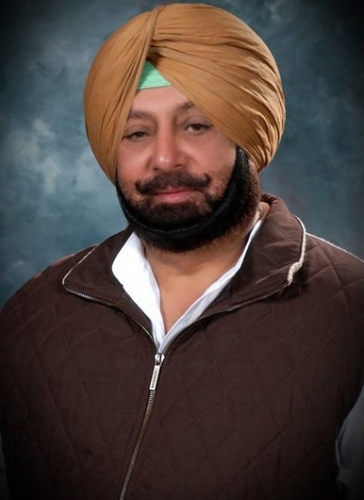
Personal life –
Captain Amarinder Singh took birth before the independence of India, in 1942, and did his schooling from the Welham Boys’ School and Lawrence School Sanawar. Then he was moved to the famous Doon School in Dehradun.
His wife is Preneet Kaur, who represents the Patiala constituency and serving as Minister of State in the External Affairs Ministry. He has two children “ son Yuvraj Raninder Singh and daughter Jai Inder Kaur”.
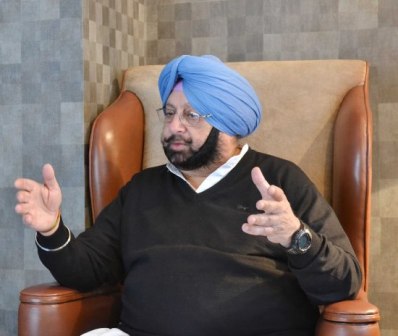
Political career –
Amarinder Singh began his political career by winning the parliamentary election on an Indian National Congress (INC) ticket in the year 1980. But, four years after in 1984, he resigned from the Lok Sabha as well as from the Congress party as a protest against the Army’s action in Golden Temple in Operation Blue Star. He then joined the Shiromani Akali Dal (SAD) and became a convenor of the Sikh Forum.
He was elected to the state legislature on SAD ticket and became a minister for Agriculture, Forest, Development and Panchayats. But, he later broke away from the Akali Dal and formed a new group called Shiromani Akali Dal (Panthic). However, the group later merged with the Indiuan National Congress.
He served Punjab Pradesh Congress Committee as President from 1999 to 2002 and became the Chief Minister of the state from 2002 to 2007.
In 2008, he got expelled by a special committee of Punjab Vidhan Sabha on the count of alleged regularities in the transfer of land related to the Amritsar Improvement Trust. However, the Supreme Court of India later held his expulsion from the Punjab Vidhan Sabha unconstitutional on the grounds that it was excessive. In 2009, he was elected the chairman of Punjab Congress Committee for the second time.
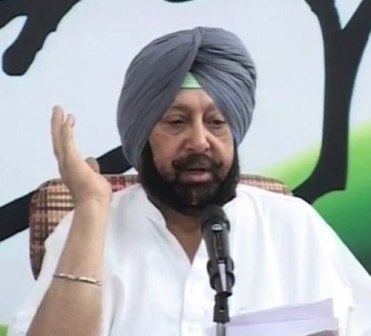
Writer –
Amarinder Singh is a prolific writer. He has written a number of books on war and Sikh history, including A Ridge Too Far; Lest We Forget; The Last Sunset; and Rise & Fall of Lahore Durbar.
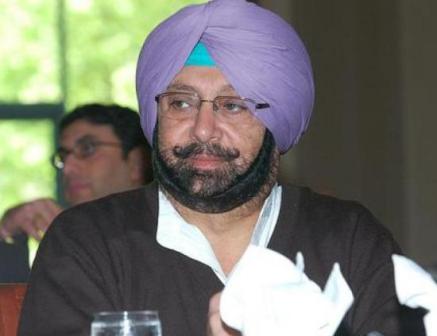




 (3.65 out of 5)
(3.65 out of 5)




































